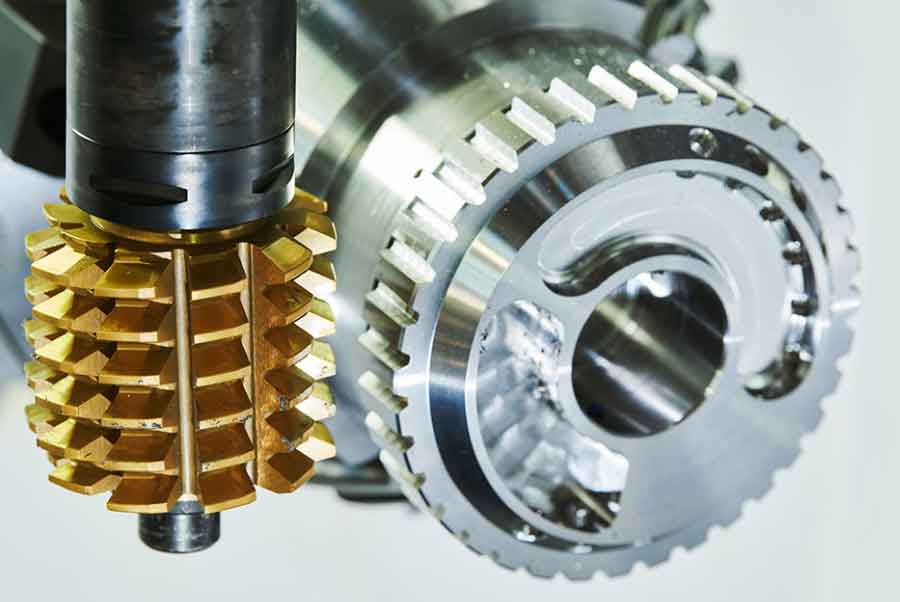Gear hobbing is a precise and specialized process used in gear manufacturing to create accurate and high-quality gear teeth profiles. It involves the use of a hob, a cutting tool with helical teeth, to remove material from a gear blank, forming the gear teeth. Here are some key aspects of gear hobbing that contribute to precise gear cutting:

- Hob Design and Manufacturing: The hob is the key tool used in gear hobbing. It is meticulously designed and manufactured to meet specific gear requirements. The hob’s tooth geometry, helix angle, and tooth profile are precisely engineered to generate the desired gear tooth shape. The hob is made from high-speed steel (HSS) or carbide to ensure durability and maintain cutting accuracy over extended periods.
- Hobbing Machine Setup: The setup of the hobbing machine plays a crucial role in achieving precise gear cutting. The gear blank is mounted on the machine’s spindle, and the hob is positioned at a precise angle and distance from the gear blank. The alignment and synchronization of the hob and gear blank are critical to ensure accurate tooth formation.
- Cutting Parameters Optimization: Various cutting parameters are carefully optimized to achieve precise gear cutting. These parameters include hob speed, workpiece rotation speed, feed rate, and axial depth of cut. The selection of appropriate cutting parameters is based on factors such as the gear module, tooth profile requirements, material properties, and desired surface finish. Fine-tuning these parameters ensures the accurate and consistent formation of gear teeth.
- Controlled Feed Mechanism: The feed mechanism in the hobbing machine controls the axial movement of the hob relative to the gear blank. It ensures a controlled and consistent feed rate during the cutting process. This mechanism allows for precise control of the depth of cut and the rate at which the gear teeth are formed, resulting in accurate tooth profiles.
- Quality Control and Inspection: Throughout the gear hobbing process, quality control and inspection are essential to ensure precise gear cutting. Advanced measuring instruments, such as gear analyzers and coordinate measuring machines (CMM), are used to verify the gear tooth dimensions, tooth profile, tooth spacing, and surface finish. Inspection at various stages helps detect any deviations from the desired specifications and allows for adjustments or corrective measures.
- Tool Maintenance and Sharpening: Proper maintenance and periodic sharpening of the hob are crucial to maintain precise gear cutting. Regular inspection and reconditioning of the hob’s cutting edges ensure that they remain sharp and accurate. Dull or worn hob teeth can result in poor gear quality, increased tool wear, and reduced cutting precision.
- Process Monitoring and Control: Modern hobbing machines often incorporate advanced control systems and monitoring techniques. Real-time monitoring of cutting forces, temperature, and tool wear can help maintain precise gear cutting. Adaptive control systems can adjust cutting parameters on the fly to compensate for any deviations, ensuring consistent and accurate gear production.
By combining meticulous hob design, optimized cutting parameters, controlled machine setup, and rigorous quality control, gear hobbing achieves precise gear cutting. The process requires skilled operators who understand the intricacies of gear manufacturing and can make fine adjustments as necessary. Precise gear cutting is essential to ensure proper gear meshing, smooth operation, and reliable performance in various applications, including automotive, aerospace, industrial machinery, and more.
